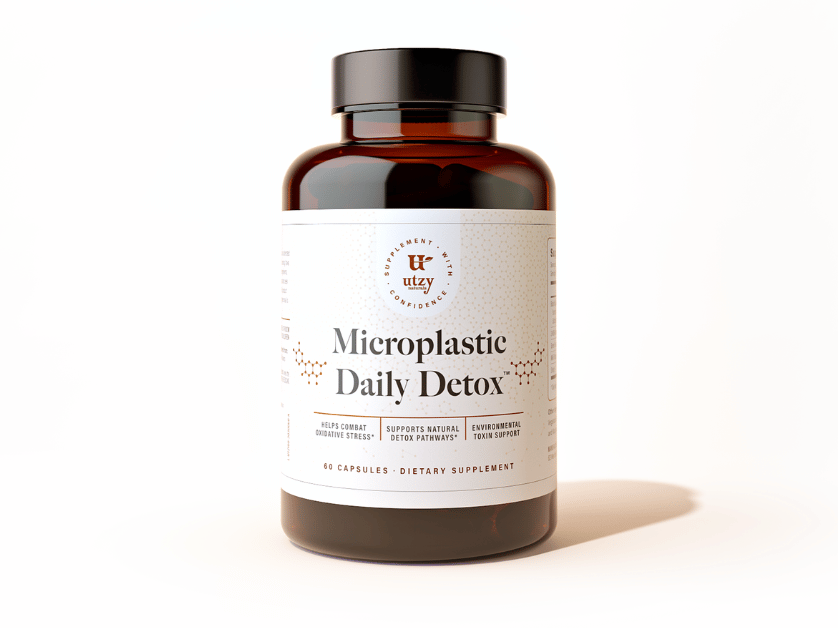Save up to 25% during our FRESH START Sale! SHOP NOW
Save up to 25% during our FRESH START Sale! SHOP NOW
shop
learn

Healthy or Hype: Is Grassfed Beef Better?
May 31, 2025 4 min read
Beef is a nutrient-packed food that provides several nutrients including Vitamin A, E, B vitamins, iron, zinc, and selenium (1).
The nutritional composition of beef can change though depending on how cows are fed, and the type of foods they consume; whether it’s grass-fed or grain-fed.
Grass-fed beef is often marketed as the better beef, but is that really true?
This article will look at the evidence between grass-fed beef and grain-fed beef and answer the question, “is grass-fed beef better?”.

How is Grass-Fed Beef Different?
As the name applies, grass-fed beef means that the cows' primary source of food is grass.
According to the USDA, a label of grass-fed beef means that:
- The cow was only fed grass, legumes or vegetables, and cereal grains.
- They cannot be fed grain or grain byproducts
- They must have continuous access to pasture during the growing season (2).
Grain-fed beef on the other hand, can be fed foods such as grain, corn, and soy-based products.
In addition to the types of foods the cows eat, there’s also a difference between the two nutrition-wise.
Nutrients in Grass-Fed Beef:
One main difference between grass-fed and grain-fed beef is the nutritional value. Grass-fed beef has been shown to contain higher levels of:
•Omega-3 Fatty Acids:
The Standard American Diet is high in Omega-6 fatty acids, which can lead to a variety of health problems (3).
Ideally, we want our ratio of Omega 6 to Omega 3’s, around 4:1, whereas the current average ranges from 10:1-20:1 (4).
Grass-fed beef has been shown to have a Omega 6:3 ratio of 2:1, while the ratio for grain-fed cattle has been shown to be at 9:1 (5, 6).
A more balanced ratio of Omega 6:3 can be beneficial for health since omega 3 fatty acids are antioxidants that have been shown to be helpful for things like:
- Reducing the risk for heart disease (7, 8).
- Promoting brain health (9)
- Reducing inflammation in the body (10, 11)
•Vitamin A & E:
Studies have also found a higher level of Vitamin A and E in grass-fed beef compared to grain-fed beef (12).
Vitamin A plays a critical role in immunity, vision, and communication between our cells (13).
Vitamin E is an antioxidant that can help reduce oxidative stress in the body, and helps promote heart and brain health (14).
•Glutathione:
Several studies have found grass-fed beef to contain higher levels of the antioxidant called glutathione.
This antioxidant helps reduce free radicals in the body, prevents damage to DNA, and supports nutrient metabolism (15, 16).
•Conjugated Linoleic Acid (CLA):
Research has found grass-fed beef to contain about twice as much CLA compared to grain-fed beef (17).
CLA has been shown to be helpful for reducing fat mass, supporting metabolic health, and lowering the risk for many diseases (18, 19).
Does Grass-Fed Beef Taste Different?
Grass-fed beef tends to be leaner compared to grain-fed beef, so it often has a meatier taste.
It may also have a more “gamey” taste compared to grain-fed beef.
Additionally, grass-fed beef may have a yellowish appearance due to the higher levels of Vitamin A.
Is Grass-Fed Beef Worth the Extra Cost?
Depending on where you live, grass-fed beef can sometimes be double the cost of grain-fed beef. That’s because of the additional time and effort required to raise grass-fed cows.
So, is it worth it?
I’d say yes, due to the higher nutrient value. Plus, many people prefer the taste of grass-fed beef compared to grain-fed beef.
There are also several environmental benefits to choosing grass-fed beef, such as (20):
- Less greenhouse gas emissions
- Improved soil quality
- Reduction in water pollution
You can save money getting grass-fed beef by buying from a local farmer or CSA, or shopping at places such as Costco, Aldi, or Trader Joe's.
If you aren’t able to buy grass-fed, choose lean grain-fed beef, since toxins are stored in fat cells.
Ultimately, no matter what type of beef you buy, you’ll still obtain nutrients such as B vitamins and iron, and it will be a better option compared to many of the factory-made plant-based meats that you see in the stores today.
But Should I Be Eating Red Meat?
Many people avoid eating beef due to the saturated fat content and belief that it is not beneficial to heart health, but research has debunked that myth (21).
Plus, studies that have looked at the association between saturated fat and heart disease have been very weak and inconsistent (22).
Additionally, despite our society reducing saturated fat content, rates of developed health complications have continued to rise (23).
What is beneficial for cardiovascular health? Antioxidants such as omega-3 fatty acids and Vitamin E, which grass-fed beef contains (24, 25).
Ultimately, it’s important to look at your diet as a whole, versus focusing on just one food (26).
So, Is Grass-Fed Beef Better? My Verdict:
Grass-fed beef is a highly nutrient-dense food.
If you’re able to buy grass-fed beef and have access to it, I’d say it’s a better option due to the higher amounts of nutrients and antioxidants it provides.
If you aren’t, focus on lean varieties of grain-fed beef, and know that you’re still getting a variety of nutrients.

Leave a comment
Comments will be approved before showing up.
Also in Health
Subscribe
Sign up to get the latest on sales, new releases and more …
Join the Utzy Naturals Club!
Sign up and get the latest on sales, new releases, and more...






